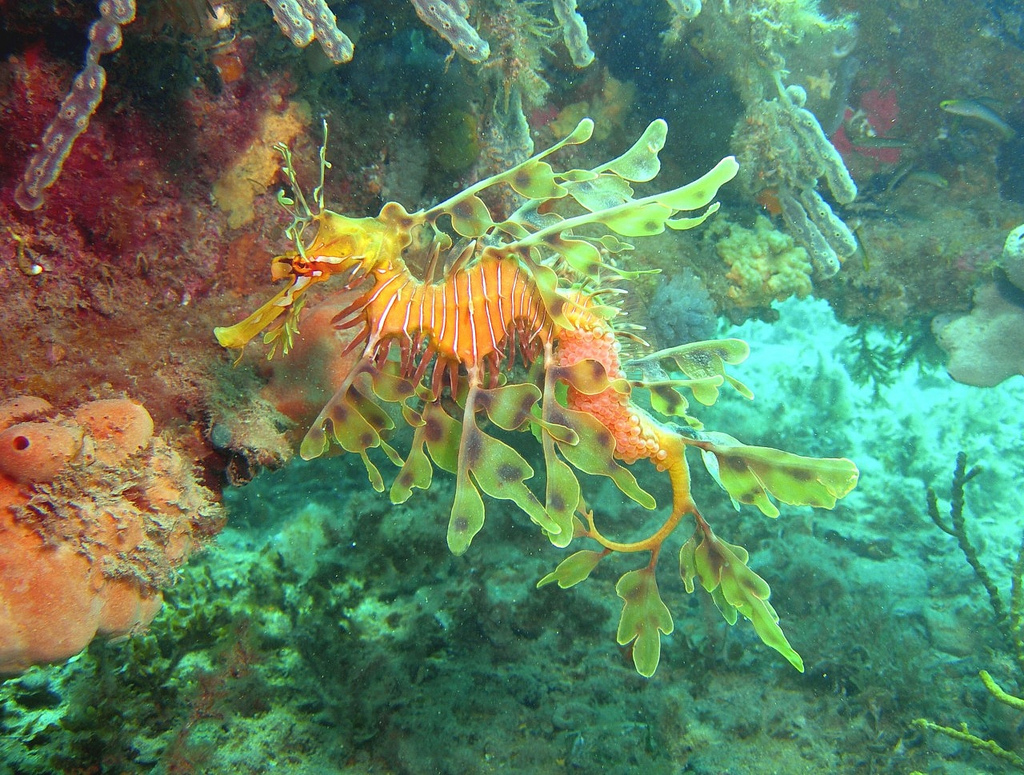Heading out for an underwater photography adventure? Find out how to get the best photos of South Australia’s delicate seadragon models.

Adelaide’s waters are home to many incredible plants and animals – perhaps two of the most magical are the leafy and weedy seadragon.
Before you head out to capture them on camera, read on to discover how to get the best photos and keep your seadragon models safe.

1. Let seadragons move at their own pace
Seadragons are not fast fish. To avoid photos of an upset seadragon, let them do their own thing, at their own speed, and don’t crowd around them.
2. Wait for seadragons to be in front of a good background
Seadragons are like the chameleons of the sea. They change colour to blend into their surroundings. So, when taking photos of them wait for the seadragon to be against a dark or solid-coloured background. This will give your photo the best contrast possible for the seadragon to pop.
Fun fact: Seadragons change colour and pattern as they get older.

3. Avoid being the paparazzi
Continuous photos can stress seadragons out. For the best pics, take just a few photos at a time and then give the seadragon some space to breathe. If you need more pics, be sure to wait a few minutes before returning to photograph them – your model will thank you.
Fun fact: Each seadragon has unique markings on their face, head and leafy appendages (aka limbs).
4. Be mindful of dads-to-be
It’s the male seadragon that carries the future children – and he does not do it lightly! With a whopping 250-300 eggs on-board at once, it’s not surprising that he’s a little slow.
The eggs are also very vulnerable, so if you spot a male with eggs, it’s best to just let him be and either find another dragon to photograph, or even better avoid photography during their October to January breeding season altogether.

5. Give way to seadragons
To get the clearest photos and avoid harming the dragons, maintain your own buoyancy and never touch, chase, move or hold on to dragons or their habitat.
Keep in mind that seadragons have a very small home range, so try not to stay too long in the one spot.

Top tip: When you’ve finished viewing or photographing seadragons, be sure to swim away carefully so that they aren’t bumped by fins, tanks or any other diving gear.
Other ways to help
- Submit your seadragon sightings to DragonSearch to help monitor the species.
- Pick up rubbish in the water and on the beach and then recycle or dispose of it properly, so that marine life doesn’t become tangled up in it.
- When diving or snorkelling, follow the seadragon code of conduct.
- When boating, make sure you moor away from seagrass beds and reefs.
- Become a Coastal Ambassador. Sign up to our newsletter to find out about the next intake.
This story was originally published in January 2022.